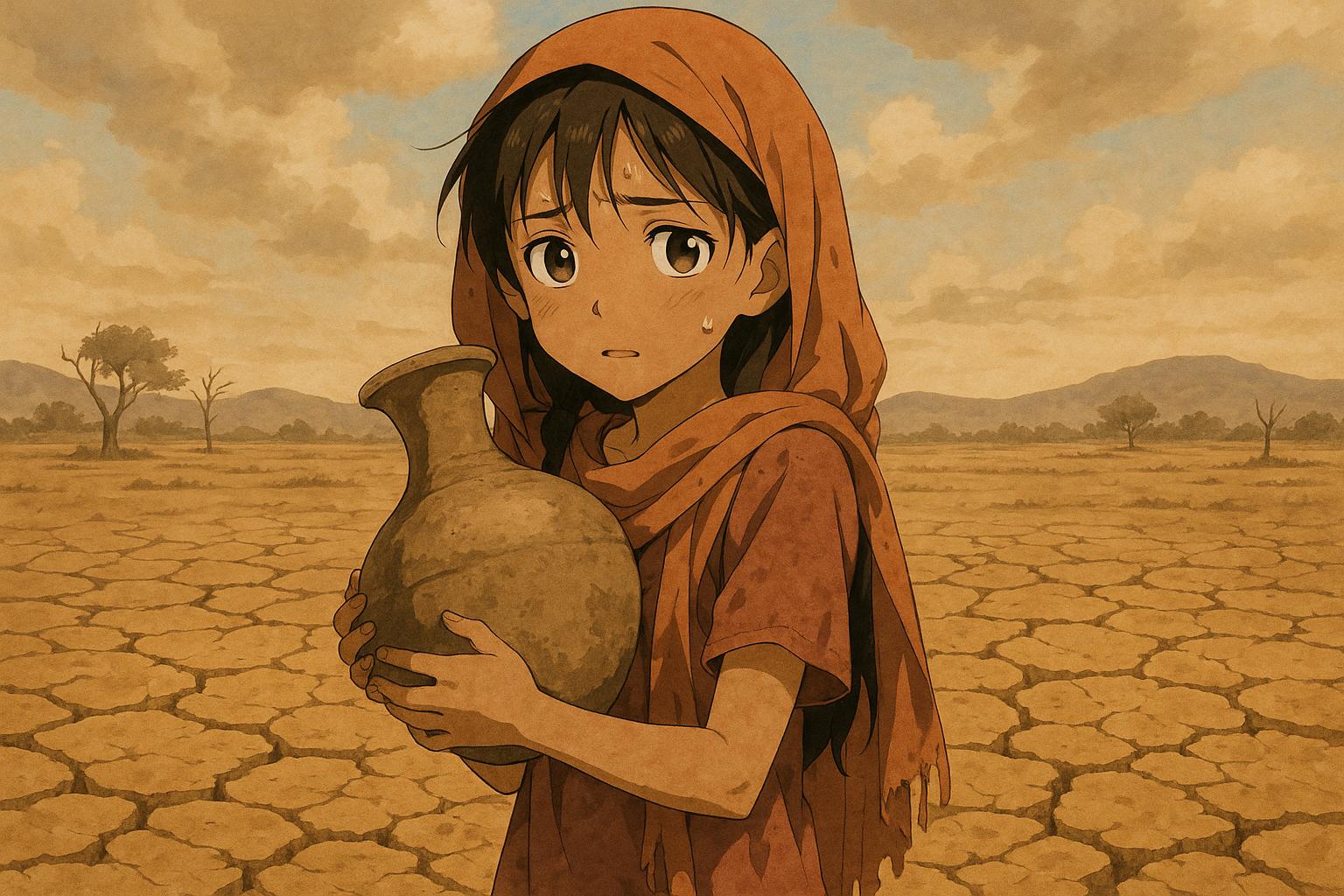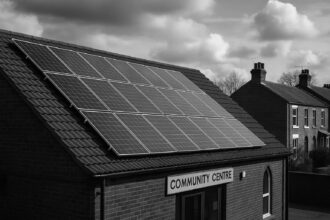Adolescent girls in marginalised regions face disrupted education as climate change exacerbates water scarcity and ecological stress, highlighting the urgent need for targeted resilience measures.
Talking about climate change often begins and ends with a familiar string of buzzwords — rising temperatures, heat wave days, and net zero ambitions. Yet, this narrow focus neglects the profound everyday impact of climate change on the most vulnerable populations, particularly children. Among them, adolescent girls from marginalised communities frequently bear the brunt of educational disruptions linked to environmental crises. These girls, whose daily lives are shaped by the repercussions of climate change, often find themselves caught between the demands of their families and the pursuit of their academic ambitions.
Take Maithili, an adolescent girl from the Mawaasi community in Madhya Pradesh. Now pursuing a Bachelor of Arts degree, her educational journey has been severely compromised by the necessity of fetching water. As she notes, “I had to walk three kilometres daily to fetch water, through forest paths that take up four hours of my day, leaving almost no time for me to go to school. Sometimes I wondered — was I studying, or just surviving?” According to her, the dire situation stems from a significant decline in rainfall and the depletion of local water sources, a reality that many in her community face.
The increasing ecological stress due to climate change complicates life for myriad tribal communities, including the Kol and Gond, who historically depended on forest resources and subsistence farming. With reduced rainfall and diminishing forests, these communities confront further degradation of their livelihoods. The expectation that women and girls should take on the responsibility of water collection exacerbates this issue, not only denying them educational opportunities but also perpetuating entrenched gender norms. In drought-prone regions, it is girls who must trek far for water, sacrificing their time for studies—a tragic example of how climate vulnerability intersects with gender discrimination.
The lost hours spent collecting water translate to declining academic performance and increased dropout rates among girls. A report by UNICEF highlights the widespread disruption caused by extreme weather events, noting that 242 million children faced educational interruptions in 2024 alone, disproportionately affecting low-income nations in Asia and sub-Saharan Africa. This illustrates how climate change creates cascading vulnerabilities, and the consequences are felt acutely by those like Priya and Suhani, who regularly navigate unreliable water sources amidst the pressures of academic life.
Yet, some efforts to mitigate these challenges have emerged. In Padho village, where girls historically walked long distances for water, a recently installed borewell marks a significant stride towards alleviating their burden. As a result, students can now devote their time to schoolwork rather than long treks for water. While the Indian government has included the village under the Nal Jal Yojana, which aims to improve drinking water access, the need for infrastructure improvements is clear. Community-driven initiatives can serve as templates for sustainable change at the grassroots level, wearing away the challenges posed by climate change.
Despite these small advancements, broader questions about the future looms large. As climate change continues to threaten educational frameworks globally, the urgency for resilience in educational infrastructure escalates. Research indicates that inadequate facilities exacerbated by climate extremes lead to significant educational challenges. This is evident in countries like Bangladesh, where flooding has already caused considerable school closures, a harbinger of future disruptions unless urgent interventions are made.
Critically, the global response to climate change should not merely be about environmental sustainability but equally about ensuring that the rights of children are upheld. This includes addressing the unique needs of girls whose educational opportunities are perilously at risk. The need for systemic change is urgent. Delaying necessary adaptations in educational structures and climate-resilient frameworks may entail not just environmental decline but a generation of lost potential. The imperative is not only to fight for the planet but also for the futures of those who will inherit it, ensuring they equitably share in the benefits of sustainable development.
In this context, it is time to ask not whether frameworks that prioritise child rights in the face of climate change are crucial but how swiftly we can implement them. Each step towards mitigating water scarcity and enhancing educational resilience strengthens the foundation for a more equitable future. As we confront the realities of climate change, the stakes are high: education, safety, and well-being of millions hinge on our current actions. The conversation must evolve beyond the metrics of environmental impact; it must grapple with the collateral damage inflicted on children’s lives and futures.
 Reference Map:
Reference Map:
- Paragraph 1 – [1], [2]
- Paragraph 2 – [1], [3], [5]
- Paragraph 3 – [2], [4], [6]
- Paragraph 4 – [1], [7]
- Paragraph 5 – [1], [3], [5]
- Paragraph 6 – [1], [2]
Source: Noah Wire Services
- https://www.downtoearth.org.in/environment/world-environment-day-2025-no-its-not-just-about-counting-number-of-heat-wave-days-lets-count-how-many-school-days-are-lost-in-fetching-water – Please view link – unable to able to access data
- https://apnews.com/article/eb93150ca5c1f79a663f7c6755be3196 – A UNICEF report revealed that in 2024, extreme weather events such as heatwaves, cyclones, and flooding disrupted the education of at least 242 million children across 85 countries. This equates to approximately one in seven school-going children globally being kept out of class due to climate hazards. The impact was particularly severe in low-income nations in Asia and sub-Saharan Africa, with heatwaves identified as the predominant factor, affecting over 118 million children in April alone. The report highlighted the vulnerability of children to these climatic extremes and called for better preparation to mitigate future impacts.
- https://www.reuters.com/world/africa/after-missing-school-due-extreme-heat-african-children-push-climate-action-2024-11-16/ – Children from East Africa, particularly South Sudan and Somalia, are advocating for climate action at the United Nations COP29 summit in Azerbaijan. They have experienced school disruptions due to extreme heat and floods, phenomena exacerbated by climate change. Highlighting their struggles, Siama and Naomi from South Sudan described the challenges of studying amid high temperatures, lack of climate-resilient infrastructure, and national exam pressures. Nafiso from Somalia conveyed the compounded effects of erratic weather on her father’s farming, food security, and education access. The children call for climate finance and resilient school infrastructure to secure their education and future.
- https://time.com/5880680/climate-change-reopening-schools/ – The debate around reopening schools during the COVID-19 pandemic highlights the potential for future climate-related disruptions. For example, Bangladesh has already faced significant school closures and damage due to flooding, providing a glimpse into the types of problems that might arise globally due to extreme weather. Climate change can lead to repeated closures, redirect resources of schools to disaster response, affect students’ ability to focus due to high temperatures, and disrupt educational outcomes. Research shows that climate conditions such as temperature and rainfall can significantly affect educational attainment, particularly in vulnerable regions. Climate change also poses indirect threats to education, such as economic pressures on families that may require children, especially girls, to stay home and help rather than attend school. COVID-19 has already forced a rethinking of school operations which could serve as a preparative experience for future climate challenges. However, the current response suggests that educational systems may be unprepared for such complex and sustained disruptions, underscoring the need for preemptive planning and resilience in educational infrastructure.
- https://www.savethechildren.net/news/climate-crisis-forces-indian-children-homes-and-schools – A study by Save the Children found that climate crises have significantly impacted Indian children, with at least 60% of households reporting economic repercussions and up to 90% experiencing negative effects on drinking water. Additionally, up to 75% of households reported damage to homes due to climate-related events. Health issues among children, such as dehydration, skin diseases, and allergies, were prevalent, with up to 58% of respondents indicating these problems. The report also highlighted that over 50% of children in several districts were unable to play outside due to heat, emphasizing the multifaceted challenges posed by climate change to children’s well-being and education.
- https://www.globalpartnership.org/blog/too-hot-learn-impact-climate-change-education – Extreme heat, exacerbated by climate change, is becoming more frequent and intense, posing significant educational challenges, particularly in regions with inadequate infrastructure. Many schools in low- and middle-income countries lack proper ventilation, cooling systems, and access to safe drinking water, making classrooms unbearable during heatwaves. This has led to school closures, disrupting children’s learning. For instance, in 2024, a heatwave in Pakistan forced schools to close, leaving 26 million children out of the classroom. The report underscores the need for urgent action to climate-proof education systems to ensure continuous learning and safety for children.
- https://www.ipag.org/cop29-and-india-education-in-the-shadow-of-the-climate-crisis/ – Extreme heat, exacerbated by climate change, has led to unprecedented school closures in various Indian states, with temperatures surpassing 50 degrees Celsius. Many schools lack basic infrastructure like electricity, making classrooms unsafe during heatwaves. This situation has severe effects on students’ education, leading to interrupted studies, increased dropout rates, and exacerbated educational inequalities. Additionally, climate change is fueling displacement, with families in coastal and flood-prone regions migrating due to rising sea levels and frequent flooding, further disrupting children’s education and trapping them in cycles of instability.













